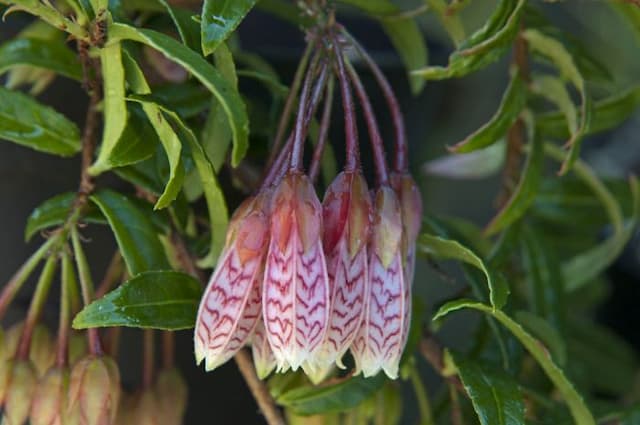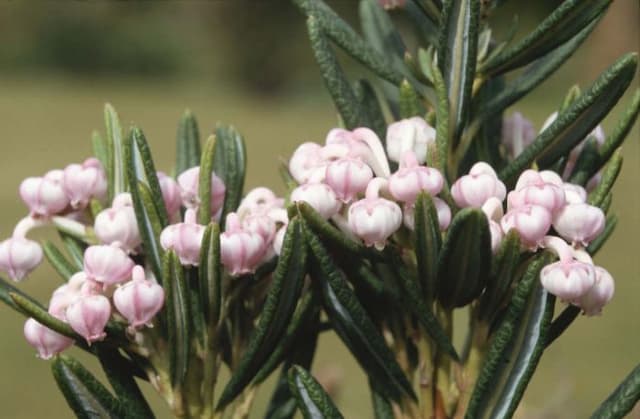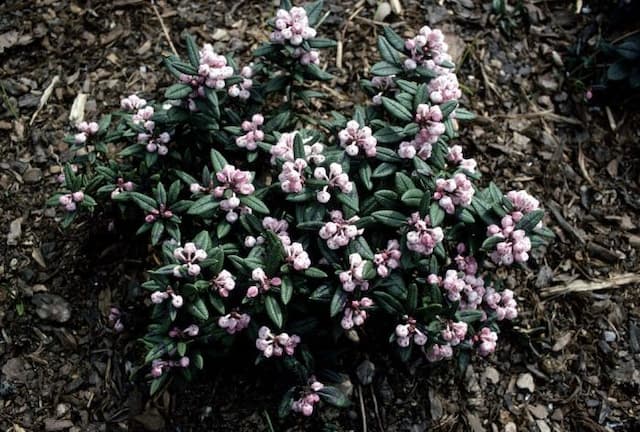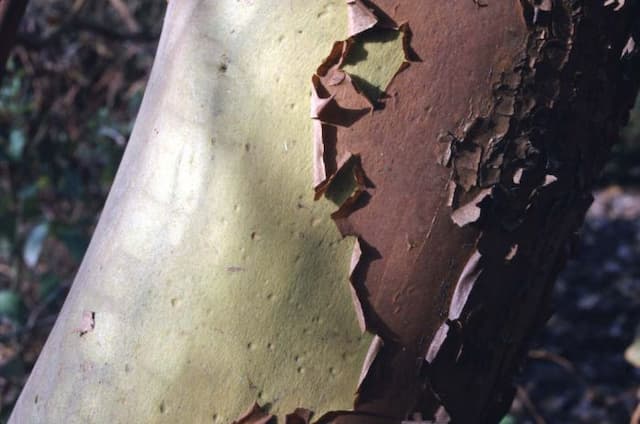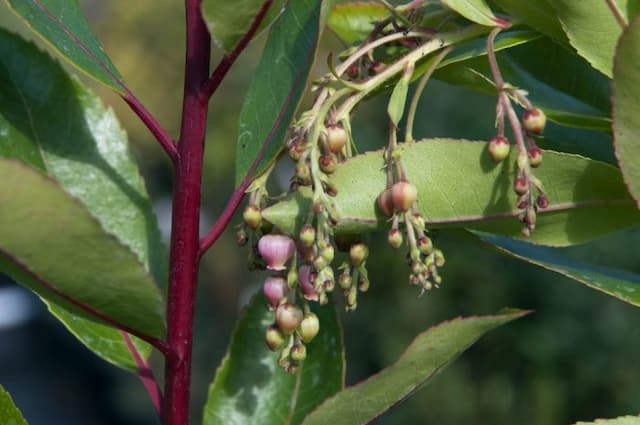Heather 'Anthony Davis' Calluna vulgaris 'Anthony Davis'

ABOUT
'Anthony Davis' is an evergreen shrub of low, spreading habit with silvery-grey, hairy foliage and white flowers in long erect spikes
About this plant
 Names
NamesFamily
Ericaceae
Synonyms
Heather, Ling, Scotch Heather
Common names
Calluna vulgaris 'Anthony Davis'.
 Characteristics
CharacteristicsLife cycle
Perennials
Foliage type
Evergreen
Color of leaves
Green
Flower color
Purple
Height
1-2 feet (30-60 cm)
Spread
1-2 feet (30-60 cm)
Plant type
Shrub
Hardiness zones
5
Native area
Europe
Benefits
 General Benefits
General Benefits- Ornamental Value: Calluna vulgaris 'Anthony Davis', commonly known as Heather, is widely appreciated for its small, colorful flowers and fine foliage, making it an attractive choice for garden landscapes.
- Habitat Support: Heather provides valuable habitat and food for various wildlife, including bees, butterflies, and other insects.
- Erosion Control: The dense and extensive root system of Heather helps stabilize soil and prevent erosion, especially on slopes or in areas with poor soil quality.
- Low Maintenance: Once established, Heather is a low-maintenance plant that requires minimal care, making it suitable for gardeners of all skill levels.
- Drought Tolerance: Heather is relatively drought-tolerant and can survive in conditions with lower water availability once established.
- Winter Interest: With its evergreen foliage and the potential for winter flowering, Heather provides visual interest in the garden even during the colder months.
- Compatibility: Heather is often used in rock gardens, as ground cover, or in combination with other plants to create diverse and multi-seasonal planting schemes.
 Medical Properties
Medical PropertiesThis plant is not used for medical purposes.
 Air-purifying Qualities
Air-purifying QualitiesThis plant is not specifically known for air purifying qualities.
 Other Uses
Other Uses- As a natural dye: Heather can be used to produce natural dyes in hues ranging from yellow to green, depending on the mordant used.
- In jewelry making: Preserved heather is sometimes incorporated into handmade jewelry, such as resin pendants or brooches, for a unique botanical aesthetic.
- In beekeeping: Heather is an excellent source of nectar and is often planted near beehives for the production of heather honey, which has distinctive taste and texture.
- In crafting brooms: Traditionally, the stiff, wiry branches of heather have been used to make brooms for sweeping, known as "besoms."
- In basketry: The flexible stems of heather can be woven into baskets, adding a rustic charm to the handmade products.
- In fabric fresheners: Dried heather has been placed in cloth sachets to freshen up and add a pleasant fragrance to linens and clothing in drawers.
- In potpourri: Dried heather flowers and stems are often used in potpourri mixtures for their color and subtle fragrance, adding to the visual and olfactory appeal.
- In smoking fish or meat: In some culinary traditions, heather is used in the smoking process to infuse fish or meats with its distinctive aroma.
- In stuffing mattresses: Historically, dried heather was used to stuff mattresses, providing insulation and some degree of springiness.
- In roof thatching: Heather has been used, particularly in Scotland, as a traditional roofing material for its durability and insulation properties.
Interesting Facts
 Feng Shui
Feng ShuiThe Heather is not used in Feng Shui practice.
 Zodiac Sign Compitability
Zodiac Sign CompitabilityThe Heather is not used in astrology practice.
 Plant Symbolism
Plant Symbolism- Protection: Calluna vulgaris, commonly known as heather, has been historically used to fashion brooms that were believed to sweep away negative energy and protect homes from harm.
- Luck: Heather is often considered a lucky plant, particularly white heather, which is rare and thus thought to be especially fortuitous.
- Admiration: Giving someone heather can be a sign of admiration and respect, as the plant's hardiness and beauty are qualities that are highly regarded.
- Solitude: The plant's preference for growing in barren, open areas has lent it symbolism connected to solitude and the ability to thrive in challenging conditions.
- Dreams: The heather plant is sometimes associated with the world of dreams, perhaps due to its ethereal appearance and the fact that it often grows in places that seem otherworldly.
 Water
WaterHeather, specifically Calluna vulgaris 'Anthony Davis', requires consistent moisture but does not do well in oversaturated soil. Water the plant when the top inch of soil feels dry, typically once or twice a week, depending on the climate and weather conditions. Use enough water to moisten the soil thoroughly but avoid waterlogging; approximately 1 gallon per week should be sufficient for a medium-sized plant, adjusting as necessary for the plant's size and environmental conditions.
 Light
LightHeathers, like the Calluna vulgaris 'Anthony Davis', thrive best in full sun to partial shade. They should be placed in a location where they can receive at least 4 to 6 hours of direct sunlight daily. However, in hotter climates, they benefit from some afternoon shade to prevent scorching.
 Temperature
TemperatureHeathers are hardy plants and the Calluna vulgaris 'Anthony Davis' is no exception, withstanding temperatures as low as 20 degrees Fahrenheit and as high as 75 degrees Fahrenheit. Ideally, maintaining a temperature range between 60 to 70 degrees Fahrenheit will promote healthy growth and flowering.
 Pruning
PruningPrune heather or Calluna vulgaris 'Anthony Davis', right after blooming, usually in the late summer or early fall, to maintain shape and encourage bushy growth. Remove dead flowers and lightly trim back the plant by a few inches to prevent it from becoming leggy. Annual pruning keeps the plant compact and stimulates new growth.
 Cleaning
CleaningAs needed
 Soil
SoilHeather (Calluna vulgaris 'Anthony Davis') flourishes in well-draining, acidic soil with a pH of 4.5 to 5.5. A suitable soil mix consists of equal parts peat, sand, and acidic compost to retain moisture while preventing waterlogging.
 Repotting
RepottingHeather should be repotted every 2 to 3 years to refresh the soil and accommodate root growth. Do this in late winter or early spring before new growth begins.
 Humidity & Misting
Humidity & MistingHeather prefers moderate humidity levels but is adaptable to various conditions. Aim for a humidity level around 40-60% for optimal growth.
 Suitable locations
Suitable locationsIndoor
Ensure bright light, cool temps, and moist acidic soil.
Outdoor
Keep in full sun, acid soil, protect from harsh winds.
Hardiness zone
4-6 USDA
 Life cycle
Life cycleCalluna vulgaris 'Anthony Davis', commonly known as Heather 'Anthony Davis', begins its life cycle with the germination of seeds, which require a well-draining soil and exposure to light. Following germination, the plant enters into the vegetative stage where it develops its characteristic needle-like leaves and woody stems. With maturity, the Heather 'Anthony Davis' reaches the flowering stage, typically during late summer to autumn, producing small pink, purple or white flowers that attract pollinators. After pollination, seeds are produced and dispersed, completing the reproductive cycle. In winter, the plant may enter into a period of dormancy, where growth slows down due to cooler temperatures. Year after year, the Heather 'Anthony Davis' can continue this cycle, with some plants living and thriving for several years under the right conditions.
 Propogation
PropogationPropogation time
Late winter-early spring
The common name for Calluna vulgaris 'Anthony Davis' is Heather. The most popular method of propagation for Heather is by softwood cuttings, typically done in late spring or early summer. To propagate, a gardener would cut a 3- to 5-inch-long (approximately 7.5 to 12.5 cm) piece of new growth, strip off the lower leaves, and dip the cut end into a rooting hormone. The cutting would then be planted in a moist, soilless mix, ensuring that the cuttings are kept at a high humidity level and in indirect light. Within a few weeks to a couple of months, the cuttings should root and can be transplanted to individual pots or direct to the garden.
